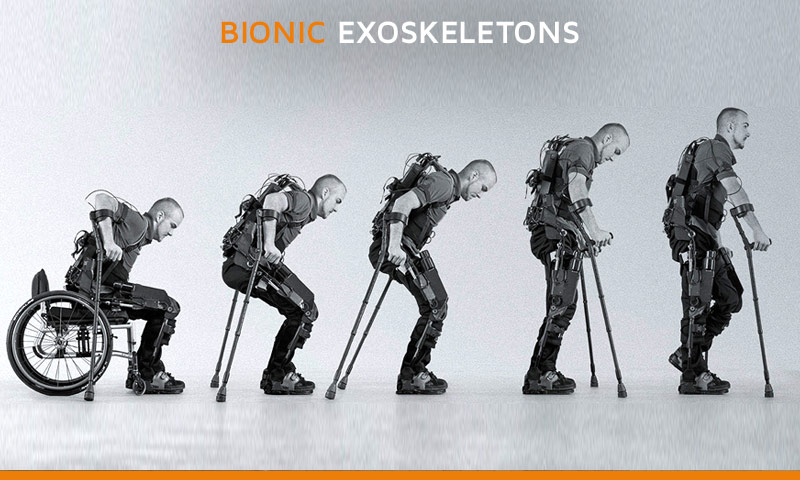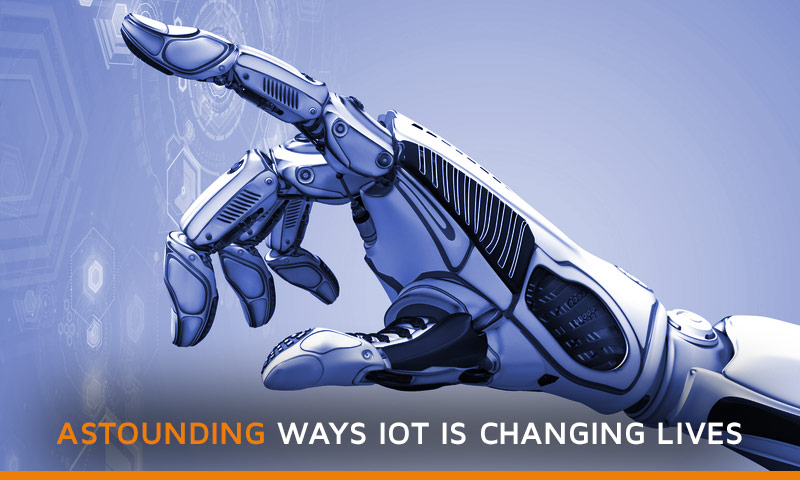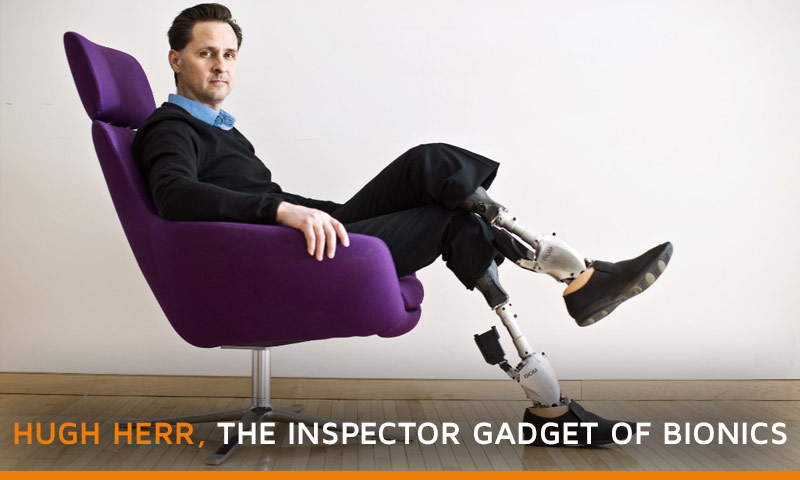Astounding Ways IoT Is Changing Lives for the Disabled
April 12, 2016Bionics Advances Health Care One Giant Leap
“…I didn’t view my body as broken. I reasoned that a human being could never be broken. Technology is inadequate. Technology is broken.”-Hugh Herr
For Hugh Herr, the head of the MIT Media Lab’s Center for Extreme Bionics, his involvement in bionics goes deep. He lost both legs from frostbite in a climbing accident in high school and has stepped up his mission ever since.
The Inspector Gadget of bionics
Herr’s injuries might have seemed a condemnation, but for him, it wasn’t. It was a call to action—and the results have been mind expanding. He is determined to “bridge the gap between ability and disability” with technology. His “Inspector Gadget ” approach has Hugh back to climbing with bionic limbs that actually enhance his performance. He looks a little like a Superhero in the making.
His team at MIT team doesn’t just replace limbs. Their designs mirror the movement inherent in those limbs, because they are responsive to the wearer’s body movements. He calls this bionic propulsion. To understand this, watch the woman in the Ted Talk walk up the flight of stairs. Patients fitted with bionic limbs enjoy a full range of movement and function.
Herr’s patients include those injured in the Boston Marathon bombing and over 400 wounded warriors.
“We’re beginning an age where electrical devices attached to our bodies will make us stronger, faster and more efficient.” Hugh Herr, TED 2014.
Can bionics cure depression?
Herr thinks it can. By altering the functions of the brain through technology, he believes we can cure depression, schizophrenia, sleep disorders, obesity, Alzheimers and other conditions that he considers disabilities.
To celebrate the breakthroughs of scientists like Herr, here are 5 more astounding ways IOT is changing lives
1. Sign language decoders
Not a fashion piece, but wearable tech that translates sign language gestures into text for easy reading by those who can’t read sign language. The next step here is to add sound to it, truly giving a voice to the users.
“Enable Talk” gloves: Microsoft Imagine Cup winner in 2012
Created by Ukraine’s quadSquad, these gloves translate sign language into speech in real time. Now, those of us who don’t know sign language can converse with people who use them.
2. Bionic Exoskeletons

EksoTM bionics creates wearable bionic “suits” that helps people with stroke and spinal cord injury regain mobility while undergoing supervised therapy.
Image is courtesy of robo hub
3. 3-D Bioprinting: Bionic Ears
Hearing is a combination of registering of sound vibrations on cartilage and the interpretation of those waves in the brain. Sometimes the inner ear develops, but the external ear—with its cartilage—doesn’t. When that happens hearing is difficult.
This bionic ear, created with a 3-D printer, becomes a “living prosthetic” that can capture sound like a real ear. What is brilliant is that the “ink” is made of living cells. The ink is not plastic, and can include cells from the patient’s own body, so the body more readily accepts it. These are more than just prosthetics.
4. Bionic Eye
Researchers at USC Hospital have developed a high tech camera that can be implanted in the eye, which transmits images from an external camera worn in sunglasses. The bionic eye enables patients who have lost vision from Retinitis Pigmentosa to see light and dark shapes. Though still in its early stages, the wearer can see objects, people, doorways, etc. and shapes making it possible to navigate the world.
5. Bionic Finger
Engadget reports that a recently developed bionic finger allows the wearer to feel texture. In the future, the development team at Harvard believes their technology will lead to prosthetics that can feel, and give surgical, rescue and industrial robots the power of artificial touch.
No longer science fiction, bionics is becoming science fact.
We’re living in a new era for people with disabilities. Technology advances will allow a better quality of life for millions of people. Prosthetics technology is slowly advancing, making way for a higher quality of life for the disabled. They no longer need to accept the notion that their lives will be limited because of their physical challenges.
Just ask Hugh Herr when you see him on a mountaintop.
“Every person should have the right to live without disability if they so choose… the right to live without depression… the right to see a loved one if they are seeing impaired, or the right to walk or to dance.” Hugh Herr, TED 2014


